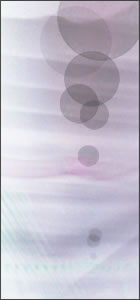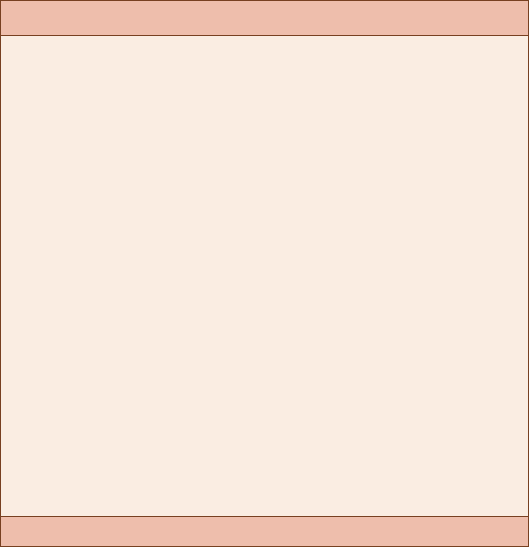


About Acupuncture
| Yang Health Center |
The practice of acupuncture and moxibustion is based on the theory of meridians. According to
this theory, qi (vital energy) and blood circulate in the body through a system of channels called
meridians, connecting internal organs with external organs or tissues. By stimulating certain
points of the body surface reached by meridians through needling or moxibustion, the flow of qi
and blood can be regulated and diseases are thus treated. These stimulation points are called
acupuncture points, or acupoints.
Acupoints reside along more than a dozen of major meridians. There are 12 pairs of regular
meridians that are systematically distributed over both sides of the body, and two major extra
meridians running along the midlines of the abdomen and back. Along these meridians more
than three hundred acupoints are identified, each having its own therapeutic action. For
example, the point Hegu (LI 4), located between the first and second metacarpal bones, can
reduce pain in the head and mouth. The point Shenmen (HT 7), located on the medial end of
the transverse crease of the wrist, can induce tranquilization.
In acupuncture clinics, the practitioner first selects appropriate acupoints along different
meridians based on identified health problems. Then very fine and thin needles are inserted into
these acupoints. The needles are made of stainless steel and vary in length from half an inch to
3 inches. The choice of needle is usually determined by the location of the acupoint and the
effects being sought. If the point is correctly located and the required depth reached, the patient
will usually experience a feeling of soreness, heaviness, numbness and distention. The
manipulator will simultaneously feel that the needle is tightened.
The needles are usually left in situ for 15-30 minutes. During this time the needles may be
manipulated to achieve the effect of tonifying the qi. Needle manipulations are generally
involved with lifting, thrusting, twisting and rotating, according to treatment specifications for the
health problem. Needling may also be activated by electrical stimulation, a procedure usually
called electro-acupuncture, in which manipulations are attained through varying frequencies
and voltages.
Treatment protocols, frequency and duration are a matter of professional judgment of the
practitioner, in consultation with the patient. A common course of treatment may initially involve
between ten and fifteen treatments spaced at approximately weekly intervals, and spread out to
monthly later in a program.
A professional practitioner will always warn the patient of the possibility of exacerbation at the
start of a course of treatment. The patients may find that in the short term after treatment, the
symptoms may in fact get worse before an improvement sets in. This is a quite common feature
of acupuncture treatment.
Patients should inquire about types of needles used prior to treatment. Most practitioners now
use pre-packed and sterilized disposable needles that are only once. If re-useable needles are
being used patients should ask to see the sterilization procedures that the practitioner adopts.
The effectiveness of an acupuncture treatment is strongly dependent upon an accurate Chinese
medical diagnosis. The needling skills and techniques of the practitioner will also influence
greatly the effectiveness of the outcome. Acupuncture can be remarkably effective in many
conditions, but in the West, patients often use acupuncture as the last option for their long-term
chronic problems. Therefore we sometimes see the treatment as slow and in some cases of
marginal benefit. With the gradual establishment of acupuncture as the treatment of choice for
many people, the effectiveness of the approach with acute as well as with more chronic
conditions is being recognized.
Acupuncture is often conducted in combination with Moxibustion. Moxibustion is the process
where moxa sticks, made of dry moxa leaves (Artemisia vulgaris) is ignited and held about an
inch above the patients’s skin over specific acupuncture points. Moxa is available in a loose
form that can be used for making moxa cones. Alternatively, moxa is packed and rolled in a long
stick like a large cigar, about 15-20 cm long and about 1-2 cm in diameter. The purpose of this
process is to warm the qi and blood in the channels. Moxibustion is most commonly used when
there is the requirement to expel cold and damp or to tonify the qi and blood. A single treatment
of moxibustion usually lasts 10-15 minutes. Needle-warming moxibustion combines needling
and moxibustion by attaching a moxa stub (about 2 cm long) to an inserted needle. This method
enhances the effects of needling and is often used to treat chronic rheumatism and rheumatoid
arthritis.
this theory, qi (vital energy) and blood circulate in the body through a system of channels called
meridians, connecting internal organs with external organs or tissues. By stimulating certain
points of the body surface reached by meridians through needling or moxibustion, the flow of qi
and blood can be regulated and diseases are thus treated. These stimulation points are called
acupuncture points, or acupoints.
Acupoints reside along more than a dozen of major meridians. There are 12 pairs of regular
meridians that are systematically distributed over both sides of the body, and two major extra
meridians running along the midlines of the abdomen and back. Along these meridians more
than three hundred acupoints are identified, each having its own therapeutic action. For
example, the point Hegu (LI 4), located between the first and second metacarpal bones, can
reduce pain in the head and mouth. The point Shenmen (HT 7), located on the medial end of
the transverse crease of the wrist, can induce tranquilization.
In acupuncture clinics, the practitioner first selects appropriate acupoints along different
meridians based on identified health problems. Then very fine and thin needles are inserted into
these acupoints. The needles are made of stainless steel and vary in length from half an inch to
3 inches. The choice of needle is usually determined by the location of the acupoint and the
effects being sought. If the point is correctly located and the required depth reached, the patient
will usually experience a feeling of soreness, heaviness, numbness and distention. The
manipulator will simultaneously feel that the needle is tightened.
The needles are usually left in situ for 15-30 minutes. During this time the needles may be
manipulated to achieve the effect of tonifying the qi. Needle manipulations are generally
involved with lifting, thrusting, twisting and rotating, according to treatment specifications for the
health problem. Needling may also be activated by electrical stimulation, a procedure usually
called electro-acupuncture, in which manipulations are attained through varying frequencies
and voltages.
Treatment protocols, frequency and duration are a matter of professional judgment of the
practitioner, in consultation with the patient. A common course of treatment may initially involve
between ten and fifteen treatments spaced at approximately weekly intervals, and spread out to
monthly later in a program.
A professional practitioner will always warn the patient of the possibility of exacerbation at the
start of a course of treatment. The patients may find that in the short term after treatment, the
symptoms may in fact get worse before an improvement sets in. This is a quite common feature
of acupuncture treatment.
Patients should inquire about types of needles used prior to treatment. Most practitioners now
use pre-packed and sterilized disposable needles that are only once. If re-useable needles are
being used patients should ask to see the sterilization procedures that the practitioner adopts.
The effectiveness of an acupuncture treatment is strongly dependent upon an accurate Chinese
medical diagnosis. The needling skills and techniques of the practitioner will also influence
greatly the effectiveness of the outcome. Acupuncture can be remarkably effective in many
conditions, but in the West, patients often use acupuncture as the last option for their long-term
chronic problems. Therefore we sometimes see the treatment as slow and in some cases of
marginal benefit. With the gradual establishment of acupuncture as the treatment of choice for
many people, the effectiveness of the approach with acute as well as with more chronic
conditions is being recognized.
Acupuncture is often conducted in combination with Moxibustion. Moxibustion is the process
where moxa sticks, made of dry moxa leaves (Artemisia vulgaris) is ignited and held about an
inch above the patients’s skin over specific acupuncture points. Moxa is available in a loose
form that can be used for making moxa cones. Alternatively, moxa is packed and rolled in a long
stick like a large cigar, about 15-20 cm long and about 1-2 cm in diameter. The purpose of this
process is to warm the qi and blood in the channels. Moxibustion is most commonly used when
there is the requirement to expel cold and damp or to tonify the qi and blood. A single treatment
of moxibustion usually lasts 10-15 minutes. Needle-warming moxibustion combines needling
and moxibustion by attaching a moxa stub (about 2 cm long) to an inserted needle. This method
enhances the effects of needling and is often used to treat chronic rheumatism and rheumatoid
arthritis.
Please call (317) 816-4006 (317) 340-1427 for a consultation.
| 10640 North College Ave. Indianapolis, IN - 46280 (317)340-1427 (317)816-4006 |
Chinese Acupuncture and Spine Care



